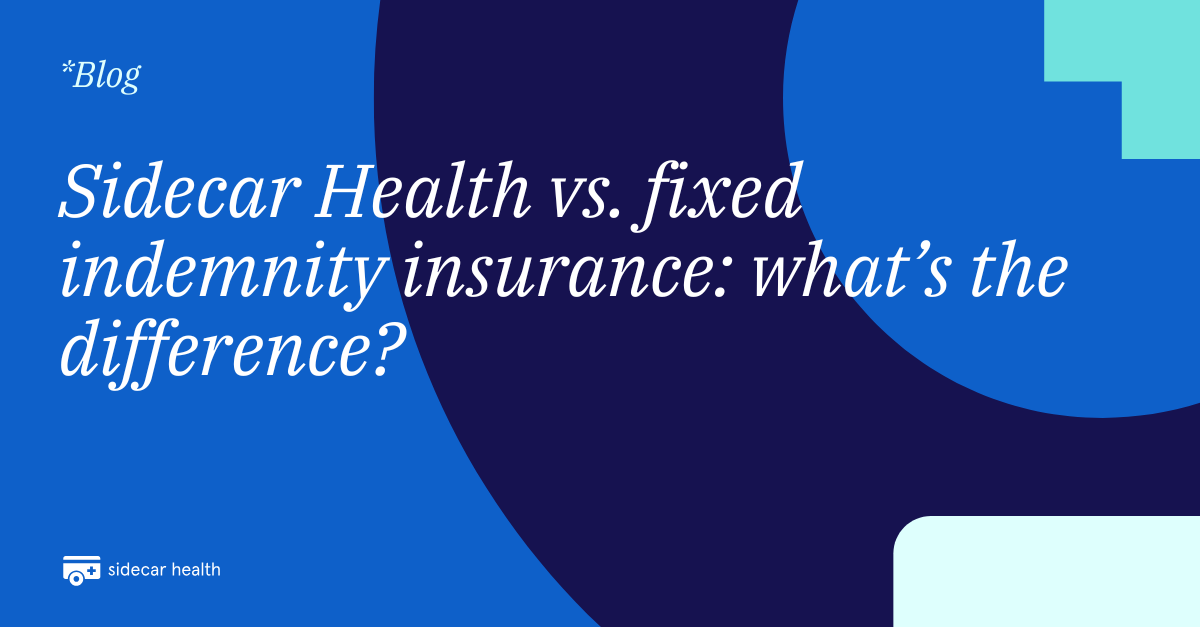
When people hear the term “fixed indemnity health plan,” they often think of limited-benefit coverage — plans that pay small, preset amounts for medical services and rarely cover the full cost of care. These plans are considered supplemental insurance, not comprehensive coverage. Importantly, fixed indemnity plans are not ACA-compliant, meaning they don’t meet the standards for major medical insurance set by the Affordable Care Act.
Sidecar Health is different
Sidecar Health isn’t a fixed indemnity plan. It’s a fully ACA-compliant, comprehensive major medical plan that covers the full range of healthcare services — from preventive care and prescriptions to surgeries, hospitalizations, and emergency visits. Just like the big-name traditional insurance plans.
Where fixed indemnity plans offer flat payouts regardless of what care actually costs, Sidecar Health uses Benefit Amounts that reflect the average local cost of care. That means our payments are designed to match the average amount providers in a member’s area charge — not arbitrary rates.
Freedom to choose — and save
With Sidecar Health, members can see any doctor or facility without worrying about networks, referrals, or prior authorizations. If members choose a provider who charges less than the Benefit Amount, they keep half the savings. If they choose a provider who charges more, the member pays the difference — which is usually less than the cost of a typical copay1 on a network-based plan.
This model rewards members for making smart, informed healthcare decisions, while preserving the protection and peace of mind of major medical coverage.
Built for real protection
As an ACA-compliant plan, Sidecar Health:
- Covers the full range of medical services, including hospital stays, surgeries, and prescriptions
- Preventive care is always covered and deductible exempt
- Complies with all federal and state regulations for large group major medical coverage
- Includes out-of-pocket maximums that protect members from catastrophic costs
- Protects members from surprise bills in emergency situations — meaning you can’t be charged the difference between what a provider bills and what your insurance pays (known as balance billing) — under the No Surprises Act
And because payments are tied to real market prices — not arbitrary fixed amounts — members always know what their care costs and what’s covered upfront, right in their member app.
In addition, Sidecar Health offers extra layers of member protection to ensure every member can access the care they need confidently and affordably:
- Care search assistance — For members seeking complex care or surgery, our team helps locate high-quality providers whose prices fall within or below the Benefit Amount, often resulting in cash back.
- Care partner program — A dedicated level of servicing for high-complexity, high-stress episodic conditions (e.g., cancer).
- Unplanned events protection — No additional charges beyond your deductible for unplanned events during planned care (e.g., an emergency C-section).
A note on older products
If you see Sidecar Health described online as a fixed indemnity plan, that likely refers to an older product we no longer offer, called the Access Plan. It was structured differently and available only to individuals.
Today, every Sidecar Health plan is fully ACA-compliant major medical insurance — designed to deliver the freedom of choice, transparency, and financial protection people deserve.
1 Co-pays not utilized by Sidecar Health. This describes member cost above the Benefit Amount similar to traditional plan co-pay levels.


